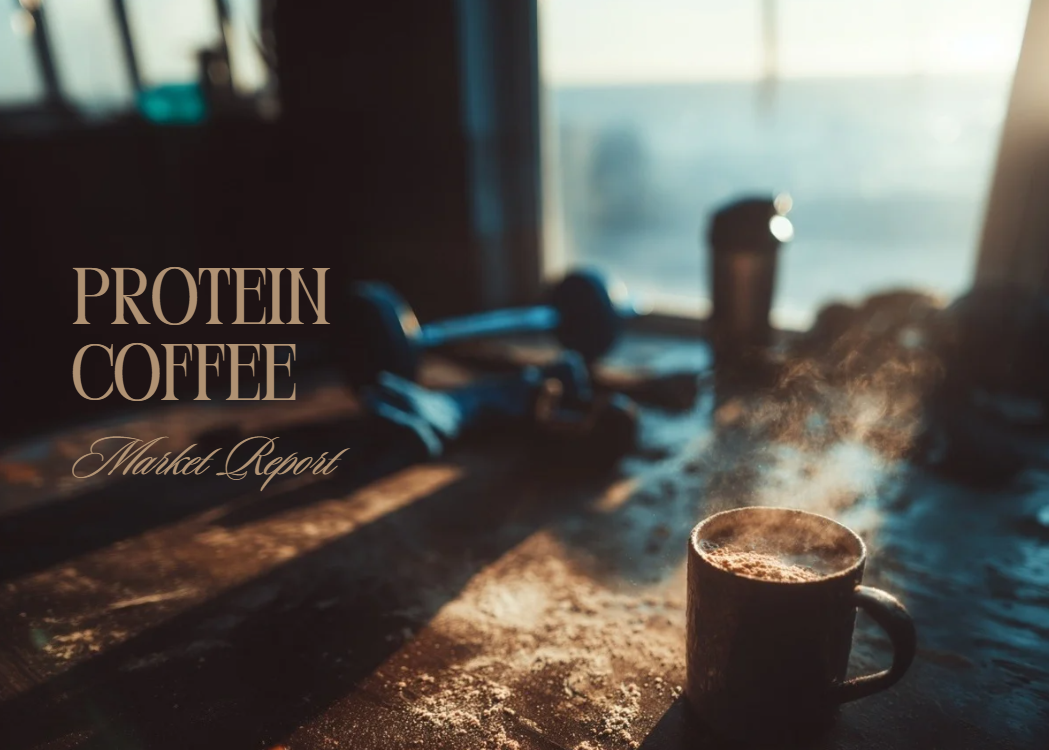
Protein this, protein that… just when you thought the protein trend was over, it’s actually just starting.
The protein coffee market is finally waking up, USD 4. billion globally in 2024, projected to hit USD 14.7 billion by 2034. North America owns 38% of this action (roughly USD 1.7 billion), and it’s growing at 12.6% annually, all because it actually solves a real problems: our constant need for convenient and nutrition.
The challenge? Most protein coffees taste just meh. The opportunity? Flavor houses’ expertise can turn this mediocre experience to a gold mine for coffee manufacturers. Here are the three main plays to focus on: mask protein taste with indulgent profile, own the underserved decaf market, and align every taste with its drinking occasion.
Bottom line: This is not a fad. It is a USD 14+ billion category waiting for someone to make it taste as good as it works.
What happens when the relentless pursuit of gains meets the sacred morning ritual? You get protein coffee… a novel, yet complicated drink that shouldn’t work but yet does. Two worlds, two different persona of consumers, both looking for some functionality in their consumption, and one drink that takes what already exists to create something entirely new.

I’ve spent enough time in enough places to know that when two cultures collide, being Vietnamese coffee meeting French technique or bodybuilders discovering specialty beans, magic can happen. Or disaster. Usually both. Yet despite years of drinking coffee and protein on separate occasions, never once have I thought about mixing the two.
Today, we’re witnessing the birth of something remarkable. Starting with TikTok influencers blending cold brew with protein powder in their dorm rooms, to sophisticated RTD lattes, the protein coffee category is just getting started. And like any good story, it’s messy, profitable, and absolutely worth understanding.
Market Research Future, and other global market researchers, put the global high-protein coffee market at USD 4.5 billion in 2024. By 2034? They’re projecting USD 14.7 billion. That’s a 12.6% CAGR, which in human terms means this category is growing faster than the freeze-dried candies we studied last week.
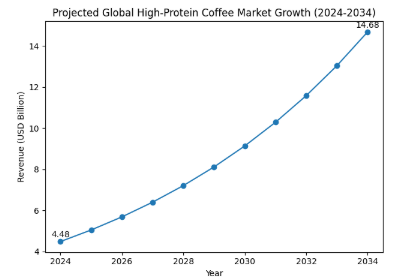
Growth Market Reports takes a broader view of “protein coffee” and sees USD 1.64 billion growing to USD 3.14 billion by 2033. Different definitions, same conclusion: this train has left the station and it’s picking up speed.
North America? We own about 38% of this market. That’s roughly USD 1.7 billion in 2024 alone.
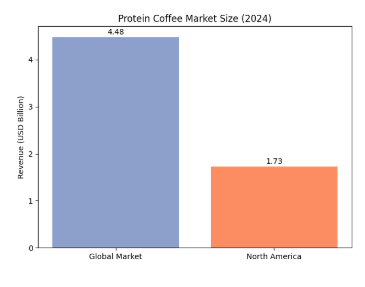
Here’s what fascinates me about this category: it succeeds precisely because it addresses real human needs, not manufactured ones.
The Science is Legitimate
Coffee already contains antioxidant phenolics, nature’s own performance enhancers. Recent research shows that proteins from green coffee beans are loaded with essential amino acids and bioactive polyphenols. One clinical trial found that adding coffee to post-exercise milk improved muscle glycogen replenishment better than milk alone. The caffeine-carb-protein trinity actually works. Who knew?
Convenience Without Compromise
A protein-fortified latte transforms morning coffee from a stimulant delivery system into a legitimate nutrition. It’s not quite the meal replacement yet, or even close to a protein bar, but we are slowly getting there. Athletes get it. Intermittent fasters get it. Anyone who’s ever tried to choke down a chalky shake at 6 AM definitely gets it.
The Social Media Effect
“Proffee” may sound like millennial nonsense, but it represents something deeper, personalization and creativity in functional nutrition. When people start experimenting with salted caramel mocha variations and cinnamon bun cold brews, this is a signal that the market is waiting for something new.
Dietary Democracy
Keto prioritizes fat and protein. Vegans want plant-based. Paleo enthusiasts want collagen. This category accommodates everyone without playing favorites, but the flavor challenges may vary wildly depending on your protein source.
The distribution teaches us more about this global trends. E-commerce leads with 32.5% of revenue, direct-to-consumer brands building relationships one subscription box at a time. Traditional grocery follows at 28.1%, which means this is already going mainstream.
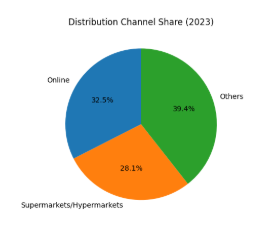
About 72% of products remain caffeinated, but here’s where it gets interesting: the decaf segment is projected to hit USD 2.3 billion by 2032. Evening protein consumption, older demographics, caffeine-sensitive consumers… there’s a whole untapped market of people who want the protein benefits without the insomnia.
The Science Fact Corner
Caffeine blocks adenosine, a neurotransmitter that makes you feel sleepy. When you drink coffee too late, caffeine stays in your system for hours, its half-life is about 5-6 hours, meaning half of it is still active after that time. So if you drink coffee at 8 PM, it can still affect your brain at 2 AM, disrupting your sleep cycle and delaying deep sleep.
The startup base does include Bulletproof 360 (bulletproof coffee referring to butter coffee, a mix of coffee, unsalted butter, and a medium chain triglyceride), Laird Superfood (plant proteins mixed + functional mushrooms), Four Sigmatic (with adaptogen mixes), Javvy Coffee (no sugar, natural prebiotic sweetener), Dutch Bros Protein Coffee… each fighting for shelf space and Instagram mentions.
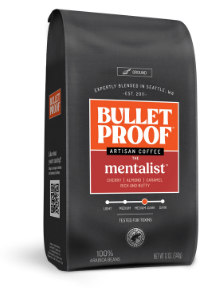
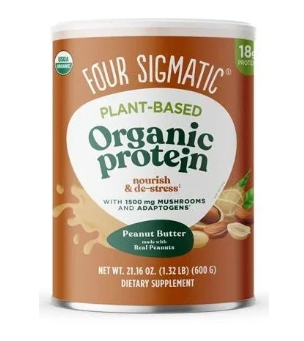
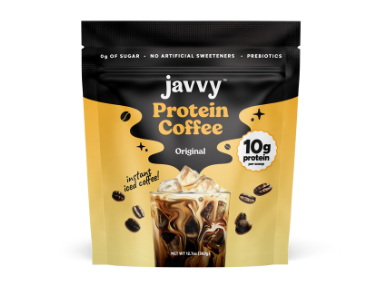
Then there are the corporate titans: Nestlé (slowly joining the trend with a ready-to-drink Coffee Protein Smoothie), Starbucks (who just announced they’re testing protein cold foam at five locations with toppings like a banana-flavored foam with 15 grams of protein on a sugar-free vanilla latte), and Danone (who’ve been launching canned coffee energy drinks and expanding their STōK coffee line while their high-protein functional dairy business drives growth).
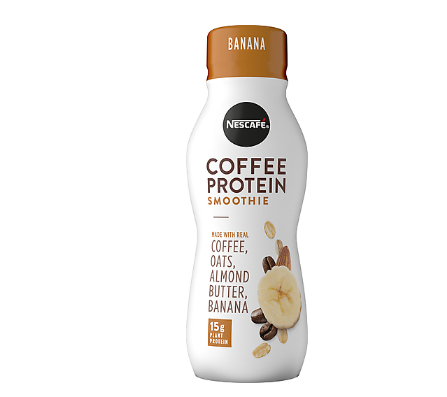
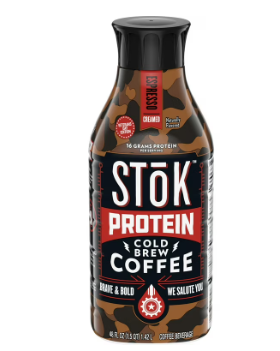
Protein + pH + Polyphenols = Precipitation
Coffee is naturally acidic (pH ~4.5-5.0), while milk proteins such as casein and whey are sensitive to low pH. Introducing dairy or plant proteins into coffee often causes visible curdling or sedimentation.
Mechanism: Acidic coffee destabilizes protein micelles (especially casein), disrupting electrostatic repulsion and promoting aggregation.
Impact: This leads to chalkiness, phase separation, and sediment… unacceptable in consumer RTDs.
Solutions Explored
Heat Stability and UHT Compatibility
Most protein-coffee beverages are shelf-stable and processed via UHT. But proteins, especially whey, are highly denatured at >130°C, leading to:
Impact: Flavor drift, sensory changes, and shortened shelf life.
R&D Priorities
Masking Protein Off-Notes Without Losing Roast Integrity
Whey, pea, and soy proteins often bring earthy, beany, or sulfurous off-notes that clash with coffee’s complex aroma (chlorogenic acids, phenols, aldehydes).
Flavorist Challenge
Techniques
Texture and Mouthfeel Optimization
The combination of protein granularity and coffee acidity often creates a gritty, powdery, or thin texture, which is inconsistent with consumer expectations (creamy, indulgent, or smooth).
Formulation Fixes
Clean Label, Shelf-Stable… Pick Two
Brands demand “clean label” and extended shelf life. But most natural proteins:
Flavor System Implication
Sugar-Free Systems (The Sweet Spot Dilemma)
Most protein coffees use non-nutritive sweeteners like stevia or monk fruit. These:
Solution Direction
thank you for reading!